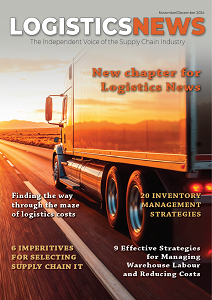By optimising how you package your products, you can see tremendous efficiency and cost benefits to your business and supply chain.
The packaging process is an important part of the shipping and freight industry. Without the right packaging, items will not have the right protection and support during transportation and delivery. This can lead to damaged goods, wasted materials and unhappy customers.
Packaging optimisation makes the packaging process more economical and effi cient to the supply chain. Product retailers seek package optimisation to help them pick the right kind, size and quantities of packing material in order to achieve cost savings throughout the supply chain. This is one of the most critical factors for brand perception and image. Companies like Apple, Starbucks and Cadbury are all considered premium brands for the care they put into product packaging.
Over the last few years, e-commerce has become a staple for many businesses. This is especially true in the light of the COVID-19 pandemic, where you must have an online presence to be successful and to sell products to your customers. The primary purpose of packaging in the e-commerce industry is to protect the product from the point that it leaves your warehouse to its delivery point at the customer’s doorstep. Packaging not only protects the product, but can also help in creating a great first impression with the customer. It has been said that some businesses have seen a 30 percent increase in consumer interest when they pay close attention to how they package their products.
Benefits of packaging optimisation
- Cost savings
One of the most obvious and immediate benefi ts of packaging optimisation is that you can get amplifi ed cost savings. These savings are possible because even a small reduction in package sizes can lead to tremendous savings throughout the supply chain. Not only are you saving on material costs, you are also saving on weight for transportation. It only takes a few centimetres of reduction in the primary packaging to translate into savings along the supply chain. This reduction means more boxes can be bundled into one shipment instead of needing several truckloads. When you can accommodate more boxes in secondary packaging, this leads to fewer trucks, fewer transit miles, fewer packaging materials and less fuel use.
- Reduction in damages
Package optimisation helps retailers choose the right packing materials to protect the products they ship to customers. This leads to a reduction in damages because fragile items placed in the wrong type of packaging can be damaged during transit. Even a single damaged SKU can lead to extra costs including replacement, additional logistics support, packaging waste and administration.
- Improves effi ciency
Depending on the types of products you distribute, you may be able to use the same size box for all your products. This will reduce the complexity of your packaging process. However, if you have a variety of products, this won’t be an option for you. Trying to use the same sized boxes for your different products will lead to wasted space and reduced effi ciency in your delivery process. It is important to fi nd a balance between the complexity of your products and the effi ciency of your packaging solutions. By reducing the number, size and shape of shipping containers, you can achieve substantial savings in your supply chain.
- Minimal carbon footprint
Materials like plastic, Styrofoam and even cardboard are proven to be harmful to the environment as they produce a lot of waste and take years to break down. In fact, one of the biggest causes of environmental degradation is the plastic that is used in packaging. Unfortunately, materials like plastic are the most fl exible, durable and reliable options, and they meet the needs of quality primary and secondary packaging.
Although it is unlikely that we will ever eliminate plastic use around the world, it is possible to reduce how often you use it with your product packaging. You can reduce the size of the packaging, limit the use of non-biodegradable substances and opt for more eco-friendly products when you redesign your product packaging. Not only will these changes minimise your carbon footprint and help the environment, but you will also win points with your customers, especially those who are environmentally conscious.
- Effective delivery
By proactively thinking about how your packaging can support your product design, you can save thousands of rands every year. Swedish furniture retailer IKEA saves approximately $1.36 million every year by rethinking product designs from a delivery perspective. By separating its furniture products into several components, it reduces packaging size by up to 50 percent. Customers then assemble the components to full-sized products in their living spaces, which makes the shopping, delivery and assembling process a winwin solution for both parties. •

.jpg)

